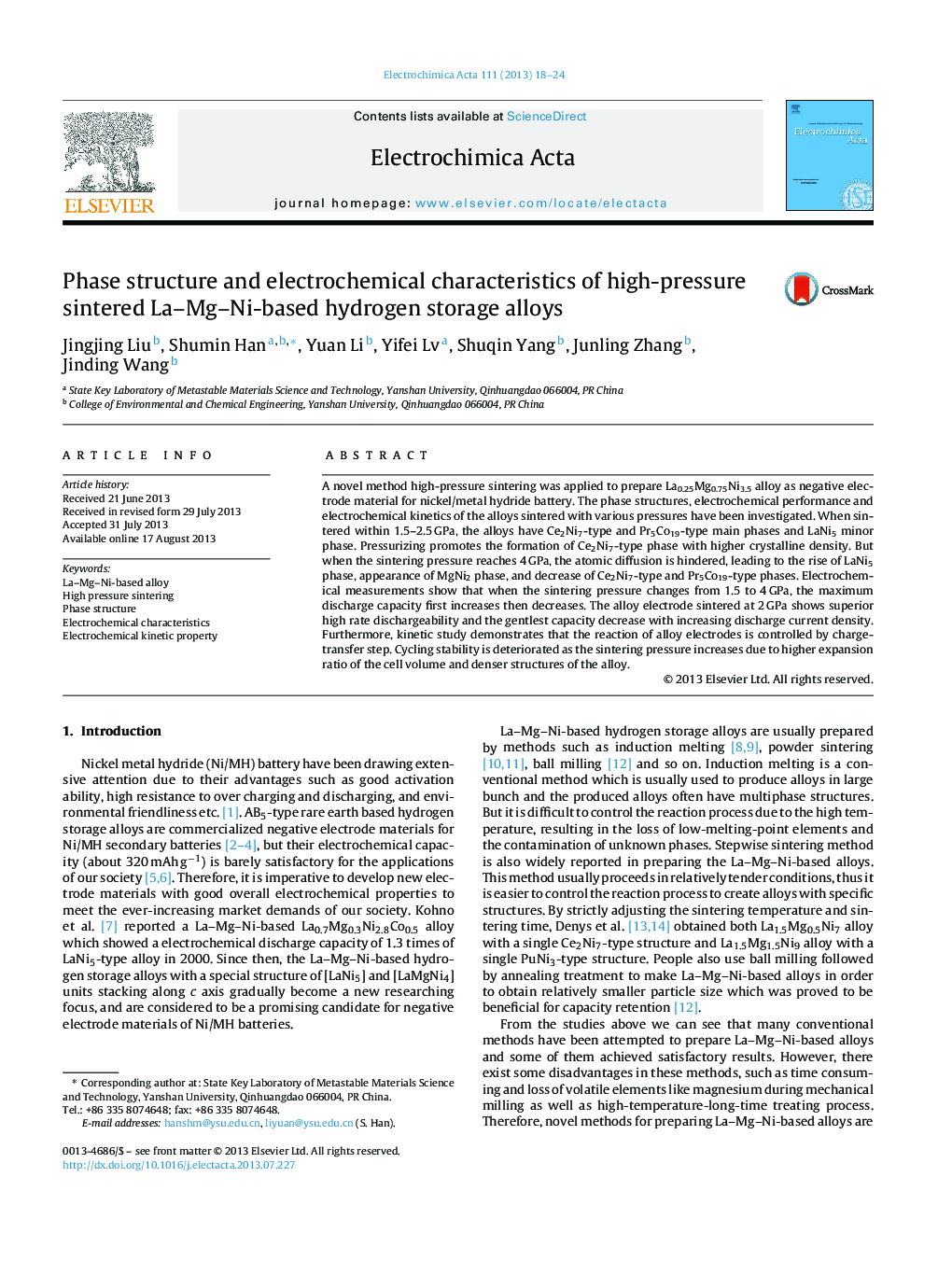| Article ID | Journal | Published Year | Pages | File Type |
|---|---|---|---|---|
| 186591 | Electrochimica Acta | 2013 | 7 Pages |
•A novel high-pressure sintering method was used to prepare La–Mg–Ni-based alloys.•Phase composition and electrochemical property are related to sintering pressure.•Increase in sintering pressure promotes formation of Ce2Ni7-type phase.•The alloy sintered at 2 GPa shows optimum electrochemical and kinetic properties.
A novel method high-pressure sintering was applied to prepare La0.25Mg0.75Ni3.5 alloy as negative electrode material for nickel/metal hydride battery. The phase structures, electrochemical performance and electrochemical kinetics of the alloys sintered with various pressures have been investigated. When sintered within 1.5–2.5 GPa, the alloys have Ce2Ni7-type and Pr5Co19-type main phases and LaNi5 minor phase. Pressurizing promotes the formation of Ce2Ni7-type phase with higher crystalline density. But when the sintering pressure reaches 4 GPa, the atomic diffusion is hindered, leading to the rise of LaNi5 phase, appearance of MgNi2 phase, and decrease of Ce2Ni7-type and Pr5Co19-type phases. Electrochemical measurements show that when the sintering pressure changes from 1.5 to 4 GPa, the maximum discharge capacity first increases then decreases. The alloy electrode sintered at 2 GPa shows superior high rate dischargeability and the gentlest capacity decrease with increasing discharge current density. Furthermore, kinetic study demonstrates that the reaction of alloy electrodes is controlled by charge-transfer step. Cycling stability is deteriorated as the sintering pressure increases due to higher expansion ratio of the cell volume and denser structures of the alloy.
